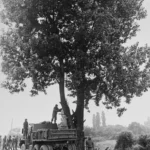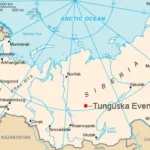
When Emus Won: Australia’s Unlikely Great Emu War Defeat
In late 1932, a flock of giant, flightless birds crossed paths with the Australian military—and won. What began as a pest-control measure to protect wheat farms in Western Australia quickly spiraled into a public relations fiasco known ever after as the Great Emu War. How did well-armed soldiers lose to birds standing nearly two meters tall? The answer reveals much about human hubris, environmental miscalculation, and the unexpected resilience of wildlife.
Background
After World War I, Australian veterans settled in the Campion district of Western Australia, taking up wheat farming on newly cleared land. When the Great Depression hit, wheat prices plummeted, and farmers were paid a government subsidy per acre planted. By late 1932, roughly 20,000 veterans and their families depended on this subsidy—but so did 20,000 emus migrating inland after their breeding season.
Emus, seeking water and food, trampled fences and devoured young wheat shoots. Reports in the Sydney Morning Herald described “a dust-cloud of emus” ravaging fields. Faced with mounting losses, farmers appealed to the federal government for military assistance.
The Campaign
In November 1932, Major G.P.W. Meredith of the Royal Australian Artillery led two soldiers armed with two Lewis machine guns and 10,000 rounds of ammunition against an estimated 20,000 emus. Their orders: reduce the emu population and protect the wheat.
- First Engagement (Nov 2): The platoon encountered about 50 emus moving in a single flock. Initial bursts yielded a handful of kills, but the birds scattered into small groups and outran the soldiers’ trucks.
- Subsequent Attempts: Over the following weeks, the campaign shifted tactics—ambushes at watering holes and night operations. Yet the emus’ speed (up to 48 km/h), tough feathers, and ability to absorb bullets meant that many shots failed to drop their targets.
- Public Reaction: Meanwhile, newspaper cartoons lampooned the army’s failure. One editorial quipped that the emu “proved a formidable foe in the art of dispersion and endurance.”
By December, after expending over 2,500 rounds, official counts acknowledged only around 1,000 emus killed—far short of the farmers’ needs.
Sources and Theories
- Official Reports: Government documents admit the operation was discontinued in mid-December when Major Meredith concluded the military “were unable to carry out the aims of the operation.”
- Environmental Misjudgment: Emus’ flocking behavior and natural resilience were underestimated.
- Logistical Challenges: The Lewis guns often jammed in dusty conditions; the soldiers lacked appropriate animal-control training.
- Legacy Accounts: Historians note the episode as a cautionary tale of applying military solutions to ecological problems .
Conclusion
The Great Emu War stands as one of history’s stranger conflicts—an army defeated not by a foreign power but by native wildlife. Today, emus remain protected under Australian law, and the episode is remembered partly in local signage and partly in military folklore. It leaves us pondering: when humans wage war on nature, who truly holds the advantage?







